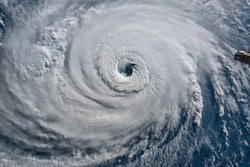
Commercial transportation continues to grow, but challenges have arisen due to an increased demand for last-mile deliveries during a labor shortage, according to results from a Risk Strategies report.
“There is increased demand for last-mile deliveries due to growing e-commerce popularity and customer buying trends. However, there is a labor shortage, and this has led some businesses to prioritize short-term goals over safety regulations and overall business longevity. To meet immediate demands, businesses may put less qualified drivers on the road, adding additional risk and exposure to increased claim severity, nuclear verdicts, increased litigation, and rising medical expenses,” according to Risk Strategies.
Key takeaways:
- The elevated cost of vehicles, technology, and replacement parts has also contributed to the average cost per claim increasing.
- Driver employment classification vs. 1099 contractual agreements remain top of mind. While the contract gig-economy model is an easy way for companies to get drivers behind the wheel while saving on payroll expenses, it creates a revolving door of inexperienced labor that allows industry setbacks to persist.
- The transportation industry remains a hard market. Specific risk factors continue to fuel recent premium increases with physical damage hitting 20-25% and umbrella liability 10-30%, as well as auto liability 10-20%.
- Less experienced drivers have contributed to an increase in the frequency and severity of auto liability insurance claims. The severity of auto claims has increased over the last two years from an average of $13,000-38,000, all in tandem with social inflation, driving premium and umbrella rates higher. Physical damage, increased thefts, and the rising cost of auto parts continue to affect auto liability and property damage rates. With rising inflation and the impacts of supply chain challenges of the past year, costs have risen on physical damage for transportation vehicles.
- Inherent risks in the industry are also contributing to higher umbrella liability rates. The significant growth of claims and resulting nuclear verdicts contribute to higher liability coverage rates as insurance carriers deal with the overall risk scenario of the transportation industry. Generally, the umbrella rate increases following the same increases in primary auto liability. The industry awaits a significant positive impact once there is widespread implementation of new technologies such as high-end GPS and monitoring software.

















